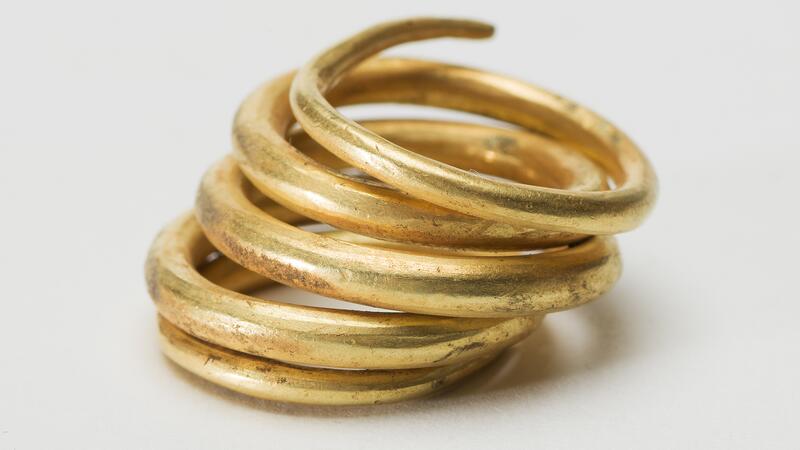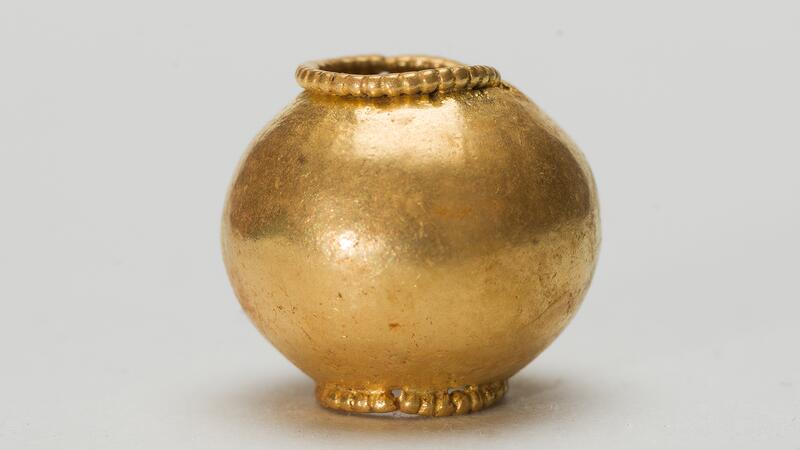Norwegian Man Uncovers Ancient Jewels with Metal Detector
The jewels, including gold rings and pendants, are said to be from 500 A.D.

Erlend Bore of Sola, Norway was treasure hunting on the island of Rennesøy when he uncovered what he described as a pile of gold coins, according to a press release from the Archaeological Museum at the University of Stavanger, translated from Norwegian.
“At first, I thought I had found chocolate money or [fictional pirate] Captain Sabertooth coins. It was completely unreal,” said Bore.
He found nine coin-shaped gold pendants inscribed with horse symbols, as well as ten gold pearl-shaped beads and three gold rings.
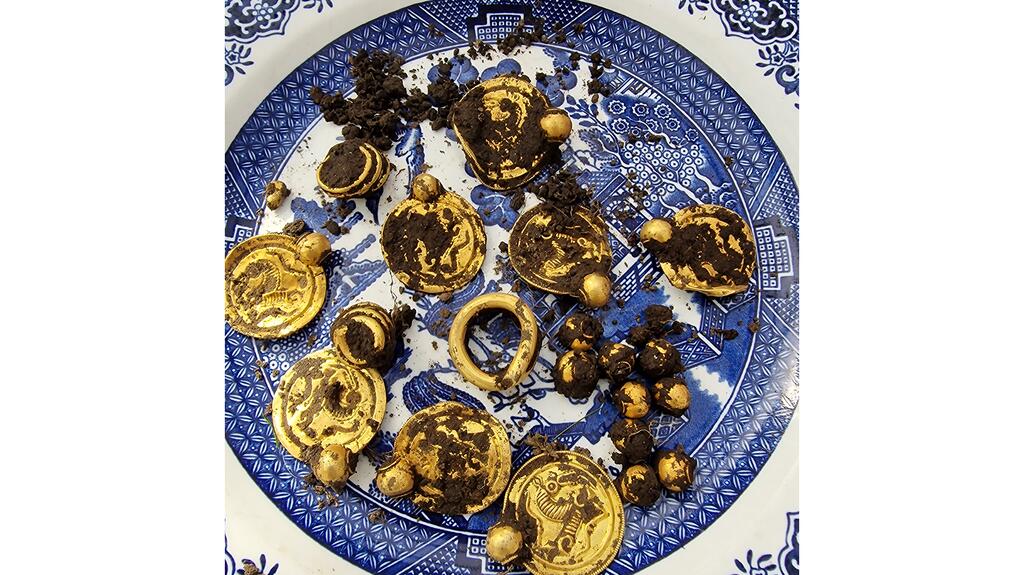
The gold pendants date to around 500 A.D., according to Associate Professor Håkon Reiersen at the Archaeological Museum, and are called "bracteates,” which were used for decoration.
“The nine bracteates and gold pearls have formed a very showy necklace. The jewelry was made by skilled jewelers and was worn by society's most powerful,” said Reiersen.
“It is very rare to find so many bracteates together. In Norway, no similar discovery has been made since the 19th century, and it is also a very unusual discovery in a Scandinavian context.”
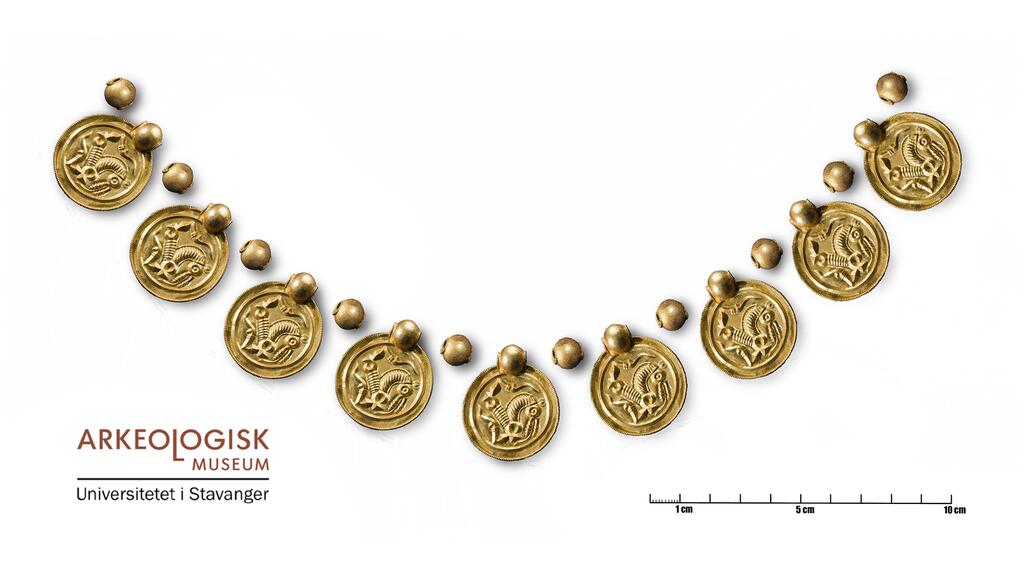
Similar bracteates in Scandinavia are thought to have been hidden in the ground towards the middle of the 5th century, right at the end of the “Migration Period.”
This period is thought to have been a time of crisis due to poor climate and plague, supported by many abandoned farms in the area dating back to the time.
“Based on the location where the find was made and experiences from similar finds, it is probably a question of either hidden valuables or sacrifices to the gods in such a dramatic time,” said Reiersen.
Sigmund Oehrl of the Archaeological Museum is an expert on bracteates and their symbols.
There have only been around 1,000 golden bracteates found so far in Scandinavia, but this one is especially rare, he said, because they have a horse motif not seen before.
Typically, the pendants will show the god Odin healing his son Balder’s sick horse, said Oehrl. The story represented renewal and resurrection and was said to protect the wearer and bestow good health.
These pendants, however, show only the horse, which is rare. His tongue is hanging out and he’s slumped over with twisted legs, appearing to be injured.
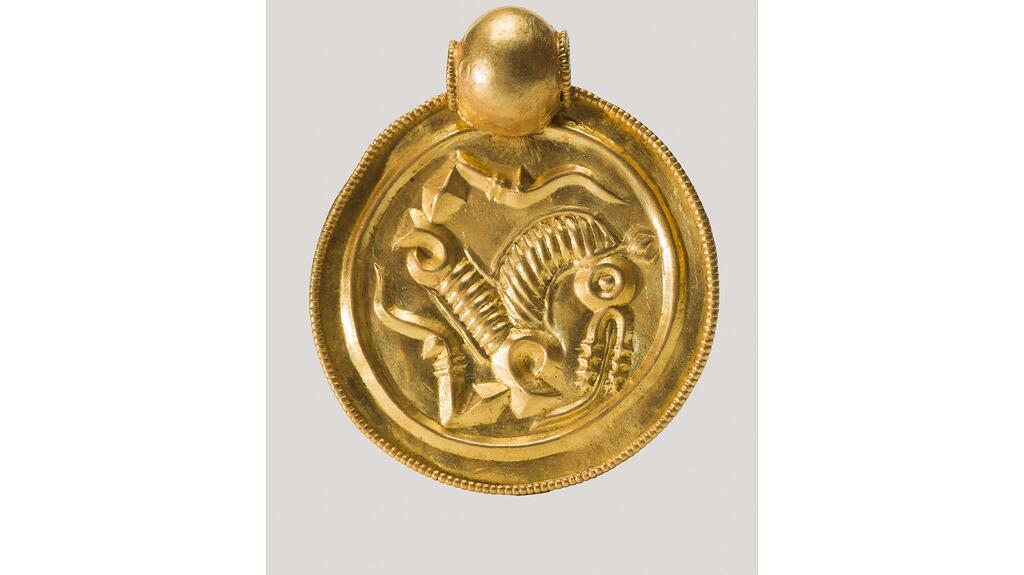
“The horse symbol represented illness and distress, but at the same time hope for healing and new life,” said Oehrl.
Marianne Enoksen, section manager for cultural heritage in Rogaland County Municipality, called the find “a completely unique discovery.”
“None of the archaeologists in Rogaland County Municipality have experienced anything like this, and it is difficult to describe the excitement when we got to see these,” she said.
Enoksen praised Bore, who discovered the jewels, for following the proper procedure by marking the spot and contacting the county council, who in turn reached out to the museum to carry out an investigation.
In Norway, all objects from before 1537 and coins older than 1650 are considered state property and must be turned over.
The Latest

Set in a Tiffany & Co. necklace, it sold for $4.2 million, the highest price and price per carat paid for a Paraíba tourmaline at auction.

Take luxury gifting to new heights this holiday season with the jeweler’s showstopping 12-carat sphene ring.

This year's theme is “Unveiling the Depths of the Ocean.”

How Jewelers of America’s 20 Under 40 are leading to ensure a brighter future for the jewelry industry.

In its annual report, Pinterest noted an increase in searches for brooches, heirloom jewelry, and ‘80s luxury.


Starting Jan. 1, customers can request the service for opal, peridot, and demantoid garnet.

The 111-year-old retailer celebrated the opening of its new location in Salem, New Hampshire, which is its third store in the state.

Roseco’s 704-page catalog showcases new lab-grown diamonds, findings, tools & more—available in print or interactive digital editions.

The filmmaker’s personal F.P. Journe “FFC” prototype was the star of Phillips’ recent record-setting watch auction in New York.

The new location in the Design District pays homage to Miami’s Art Deco heritage and its connection to the ocean.

Inflations, tariffs, and politics—including the government shutdown—were among consumers’ top concerns last month.

“Longtime favorite” presenters, as well as first-time speakers, will lead talks and workshops at the annual event in Tucson next year.

Silas Smith of Meridian Metalworks won the challenge with his pendant that blends Australian and American landscapes.

The sale of the 31.68-carat, sunset-hued stone was part of Sotheby’s first series of events and auctions in Abu Dhabi.

Most customers who walk into your store this month have made up their minds. Your job is to validate their choice, Emmanuel Raheb writes.

The collection features characters and motifs from Ukrainian folklore, including an enchanted mirror and a magic egg.

MatrixGold 3.11, the newest version of the jewelry design program, offers more flexibility, precision, and creative control.

The pavilion will be part of the 2026 JA New York Spring show, scheduled for March 15 to 17.

Kadet, a 1994 National Jeweler Retailer Hall of Fame inductee, helped grow the family-owned retailer in the Chicago area and beyond.

Billed as the world’s smallest wearable, Lumia Health’s new smart earrings have a health tracker subtly embedded in the back.

Don’t let those with December birthdays feel blue. Help them celebrate their month with blue zircon, turquoise, and tanzanite.

The new pink sapphire version of the piece dances with its wearer in the brand’s “Icons After Dark” holiday campaign.

A choice that’s generated a lot of commentary, Pantone says “Cloud Dancer” marks a fresh start and encourages relaxation and creativity.

The manufacturer’s holiday campaign features a gift guide filled with trending designs and jewelry that can be personalized.

The man was charged with theft, accused of ingesting the necklace while in a jewelry store in Auckland, New Zealand.

The Florida independent expanded its store from 8,000 to 14,000 square feet, fulfilling the vision of its late co-founder, Jim Dunn.

Sponsored by De Beers Group









